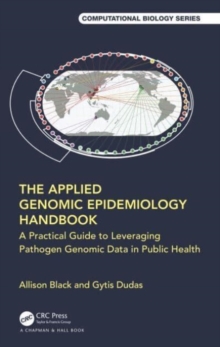
Managing Your Biological Data with Python Paperback / softback
by Allegra Via, Kristian Rother, Anna (University of Rome La Sapienza, Italy) Tramontano
Part of the Chapman & Hall/CRC Computational Biology Series series
Paperback / softback
Description
Take Control of Your Data and Use Python with ConfidenceRequiring no prior programming experience, Managing Your Biological Data with Python empowers biologists and other life scientists to work with biological data on their own using the Python language.
The book teaches them not only how to program but also how to manage their data.
It shows how to read data from files in different formats, analyze and manipulate the data, and write the results to a file or computer screen.
The first part of the text introduces the Python language and teaches readers how to write their first programs.
The second part presents the basic elements of the language, enabling readers to write small programs independently.
The third part explains how to create bigger programs using techniques to write well-organized, efficient, and error-free code.
The fourth part on data visualization shows how to plot data and draw a figure for an article or slide presentation.
The fifth part covers the Biopython programming library for reading and writing several biological file formats, querying the NCBI online databases, and retrieving biological records from the web.
The last part provides a cookbook of 20 specific programming "recipes," ranging from secondary structure prediction and multiple sequence alignment analyses to superimposing protein three-dimensional structures.
Tailoring the programming topics to the everyday needs of biologists, the book helps them easily analyze data and ultimately make better discoveries.
Every piece of code in the text is aimed at solving real biological problems.
Information
-
Available to Order - This title is available to order, with delivery expected within 2 weeks
- Format:Paperback / softback
- Pages:560 pages, 8 Tables, black and white; 33 Illustrations, black and white
- Publisher:Taylor & Francis Inc
- Publication Date:18/03/2014
- Category:
- ISBN:9781439880937
Other Formats
- Hardback from £175.00
- PDF from £56.69
Information
-
Available to Order - This title is available to order, with delivery expected within 2 weeks
- Format:Paperback / softback
- Pages:560 pages, 8 Tables, black and white; 33 Illustrations, black and white
- Publisher:Taylor & Francis Inc
- Publication Date:18/03/2014
- Category:
- ISBN:9781439880937










